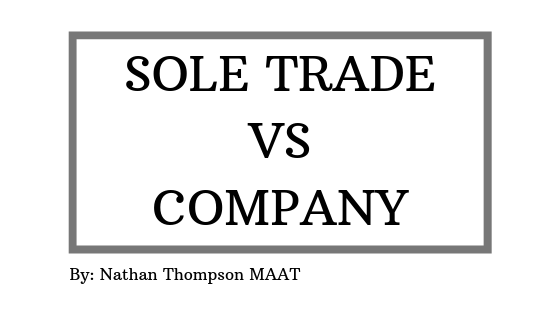Value Added Tax (VAT)
- Nathan Thompson

- Aug 31, 2019
- 3 min read

What is VAT? Who pays it? Why do we have it? And how does it work?
The what:
VAT is a tax that is added onto the sale price of goods and services currently at 20%. It's not added onto everything, some things are exempt, some things are "zero rated", others are "outside the scope" and a few lucky items are "reduced rate" (5%).
The Who: (Not the band)
Generally speaking it is the end customer who pays the final amount of VAT. So nearly everything you buy as a consumer will have 20% VAT added to it and that goes in to the treasury's coffers.
The Why:
The simple reason we have it, is because it generates a LOT of income for the treasury, which in turn pays for public services.
The 'slightly' more complex reason is to do with the EU. Back in the days before the EU there was something called the ECSC - the European Coal and Steel Community. It was basically a way of levelling the playing field between countries when exporting and importing coal and steel. This grew into the EEC and now the EU and means that goods and services between businesses in different European countries do not charge VAT to each other. For example, a VAT registered business in France won't charge you French VAT when you buy their services if you're a VAT registered UK business, it's Zero rated.
Are we going to get rid of VAT after Brexit? Not likely! Last year VAT generated about £125,300,000,000 (that's 125.3 BILLION pounds) [1]. Would you give that up?
The How:
We know the What, the Who and the Why but How does VAT work then. To start you must be a business and be registered for VAT before you can charge it or reclaim it (ordinary people can't register for VAT). A business must register for VAT if it's VAT-able sales is greater than £85,000 in a rolling 12 month period, but you can always register voluntarily.
once a business is VAT registered they charge the appropriate rate of VAT on their sales to customers. For example if your selling guitar lessons at £100 per hour you will add 20%, the standard rate, to charge the customer £120 ((£100 x 20%) + £100)
When your customer pays the £120 you keep the £100 and set aside the £20 VAT for Mr VAT man.
BUT WAIT! There's more! You can reclaim the VAT you spend on things. So if you are charged VAT on purchasing a box of plectrums for £12 you can reclaim the £2 VAT.
You reclaim it by deducting the £2 from the £20 you owe HMRC. This means you pay £18 over to Mr VAT Man (£20 - £2 = £18).
You put these figures onto your VAT return every 3 months, and you pay over the VAT within 1 month and 7 days after the quarter has ended.
For example:
1st Quarter - between 1st January and 31st March, will be due on the 7th May
WARNING:
VAT can be this simple, however it is also one of the most, if not the most, complex pieces of legislation we have in the UK. This means, that nearly everything you sell or buy, may or may not have VAT depending on other factors.
My favourite example of this is chocolate biscuits.
In the UK it is essential we have Tea, and to go with tea we have biscuits. Because it is essential to do this, biscuits are zero rated. So you buy a naked gingerbread man to go with your cup of tea, there's no VAT on the gingerbread man. HOWEVER, give the gingerbread man some decency and put chocolate trousers on him. BAM! it's now a luxury item so 20% standard rated.
For any accountancy minded people out there, no you can't apportion the VAT to the amount of the gingerbread man is covered in chocolate.
VAT is full of these little nuances and businesses can get into serious trouble if they misinterpret whether they should charge VAT or not. If you are looking to sell a new product or service always double check that you are applying the correct VAT rate.
What about VAT outside Europe?
So if you're an end customer in the UK you pay VAT
If you are a UK business selling something to a VAT registered busines in the EU, its Zero rated.
If you are selling something to a person in the EU and not registered for VAT you charge UK VAT.
But what about if you sell something to a business outside the EU?
The answer is it depends on the place of supply and I recommend checking with a professional.
If you are importing or exporting goods and services there may be other taxes, tariffs, and duties




Comments